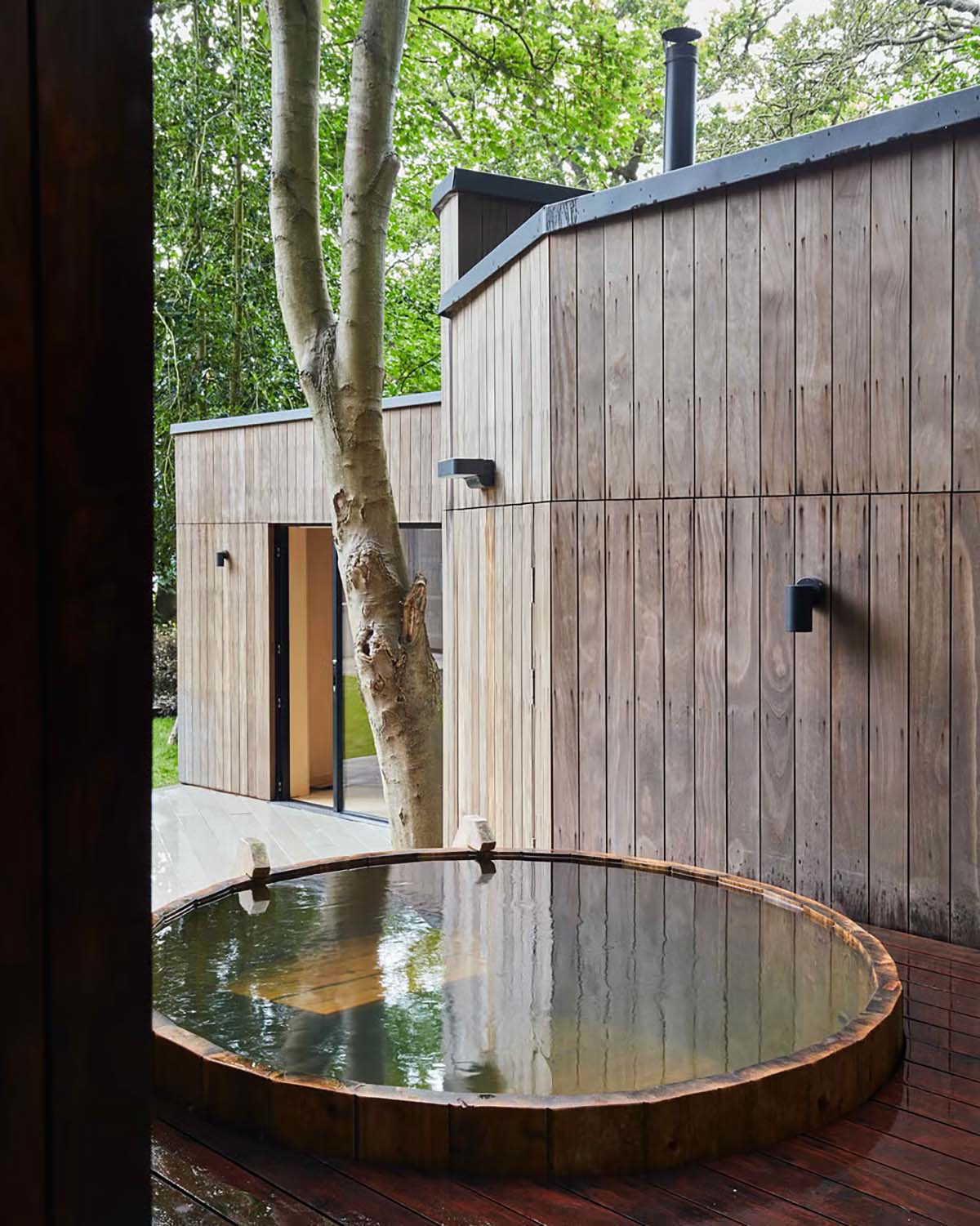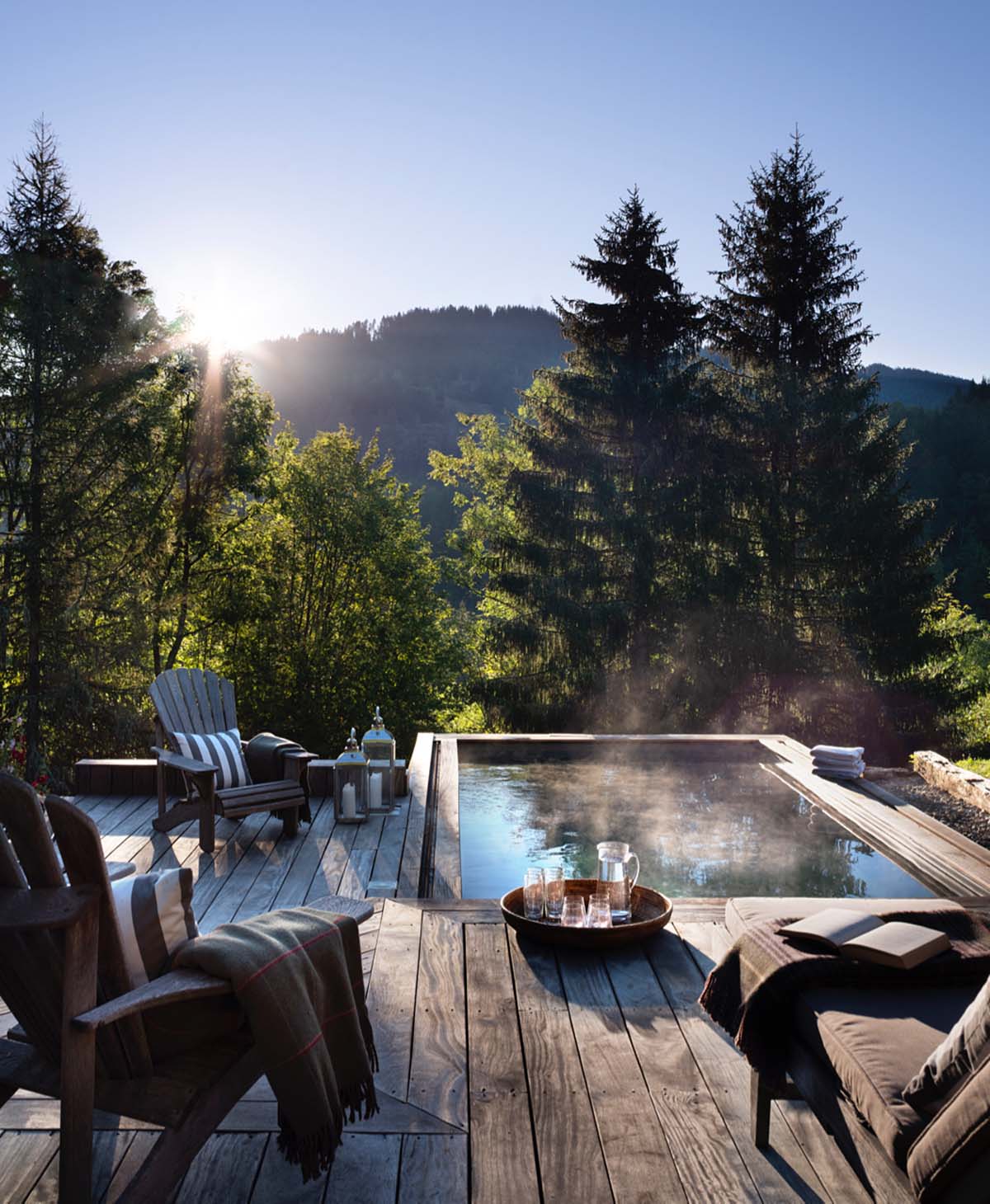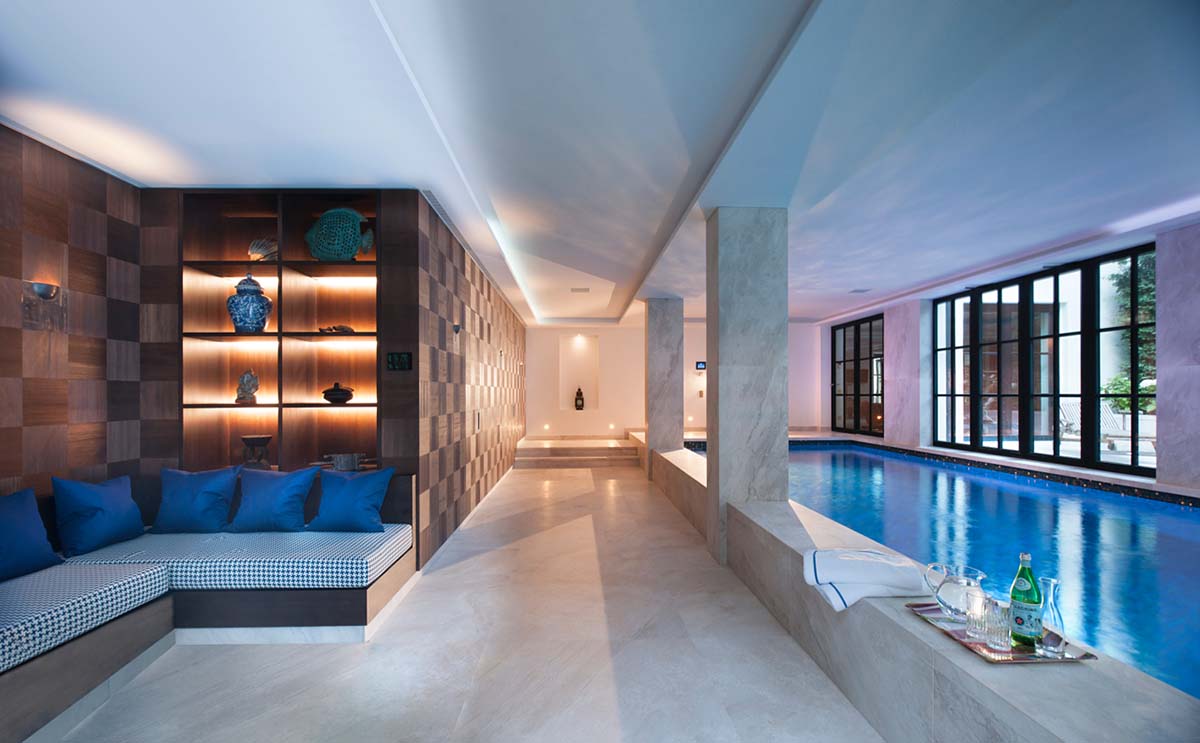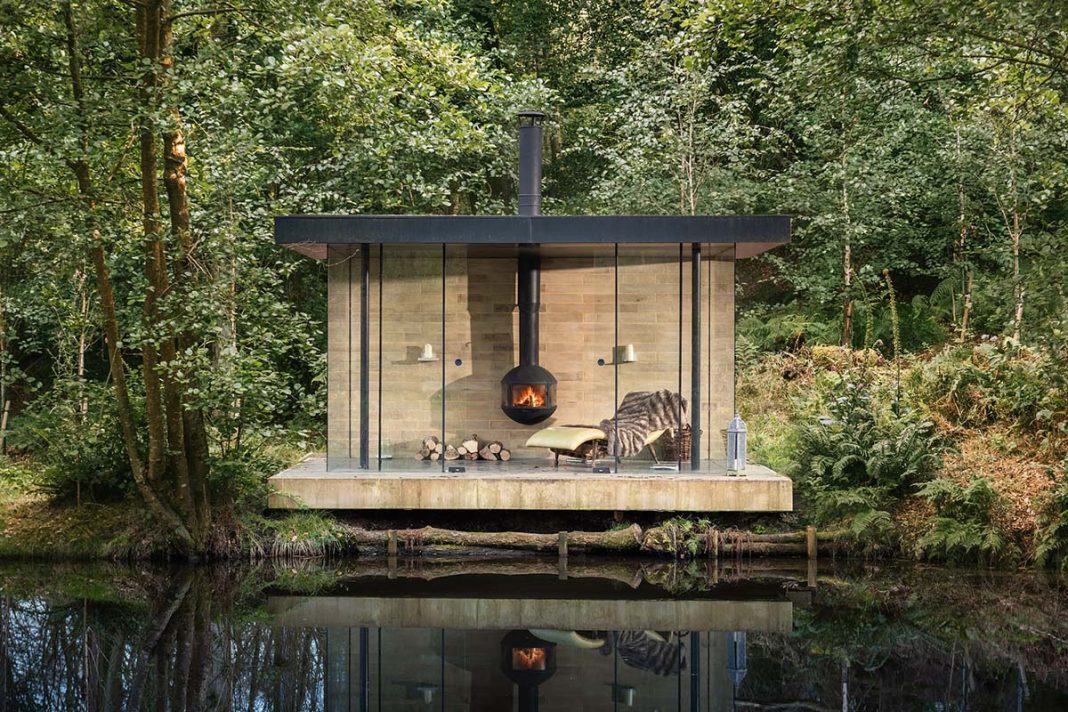We take a look at the unstoppable rise of the at-home spa
In the 1990s, my late grandparents retired to a cottage in the depths of rural Aberdeenshire. The garden, relatively modest but the largest my gran had ever had, was carpeted with wildflowers and intersected by a gentle stream. Over the years they added a summer house and a slightly wonky outdoor sauna. I didn’t know it then, but I was experiencing what decades later would come to represent wellness within the home.

Coveting a garden is nothing new but in seeking out ways to make their house something of a retreat, my grandparents were ahead of their time. While at-home saunas are standard in countries such as Finland (where there are an estimated 3.3 million saunas for a population of 5.5 million people), they’ve only started picking up in popularity in the UK in recent years. Google searches for “home sauna” rose by 84% between January and March last year, and interior designers have noted an increase in requests from clients for spa-like additions to their homes such as cold plunge pools, cedar hot-tubs and swimming ponds (yeah, pools are old-hat now).

“People became much more focused on their physical and mental well-being during the pandemic,” says one such interior designer, Nicky Dobree. “And I think the desire for wellness-focused spaces in the home arose from a need for these pursuits to become a daily ritual rather than the occasional indulgence. We are no longer solely viewing our homes as places of shelter – they are places we work, and places we retreat to when we want to slow down and feel more grounded.”
Nicky is often asked to convert entire basements into dedicated spa suites with a range of facilities that might include a hammam, plunge pool and sauna. In large countryside houses she has been known to design an outdoor pool and then house the other amenities in a spa annexe. “But even in small homes you can do things like convert a shower into one that doubles as a steam room,” she says. “Plus, a sauna can fit into a tiny little space.” Ventilation and insulation are important considerations when installing such facilities, so it’s not the kind of thing you should DIY. “You really need a consultant to come and look at the space and tell you what will or won’t work,” says Nicky. The designer creates bespoke saunas for her clients, but if your budget won’t stretch to that you could get a prefabricated model and have it installed professionally.

If it’s an outdoor sauna you’re after, Skotlanti Saunas and Heartwood Saunas are worth a look. Olga Alexeeva, creative director of the interior design studio Black & Milk, has also found that more of her clients are asking for well-being to play a central role in their home renovations. One couple requested a Russian-inspired banya (a type of wet-steam sauna) be built in their back garden in Hampstead; another couple had the top floor of their home reimagined as a wellness sanctuary containing a sauna, plunge pool, outdoor shower and relaxation area. However, the designer recognises that for most of us, an at-home spa could only be facilitated by a lottery win.
So how do we get our serenity fix? “In a bathroom, it could be something as simple as using natural materials such as stone and wood. I much prefer the way they feel compared with glossy tiles and marble surfaces, which are cold and sterile,” she says. “Another way to boost warmth and create a feeling of luxury is to get underfloor heating. We often just use electric underfloor heating, which is easy to install as it doesn’t require you to run any pipes. It makes such a difference when you don’t have to step onto a cold floor.”

Olga is also a huge advocate for feng shui, incorporating its principles into projects for clients as well as in her own house. It’s a subject she can speak deeply on – this is a woman who rearranges furniture in her home every month based on the principles of Flying Star feng shui, which she says is akin to astrology – but she has a few simple pointers to start with. “You should never place a chair or a sofa with its back to the entrance of that room,” she advises. “If your back is to the door, someone could walk in without you knowing, which results in a loss of control. It’s important to feel in control of your home.” She also advises against decorating with ‘active’ colours such as red, as this can stimulate negative energy. Keep your palette calm and grounded in nature. “Spiky shapes are perceived in feng shui as negative,” she adds. “This applies even to plants such as cacti, or succulents with sharp leaves.”
And if you’re looking for something you could do today to make you feel better within your home, slip on some marigolds and sort out your kitchen cupboards. Sure, saunas are great. But have you ever put your spice rack in alphabetical order?





